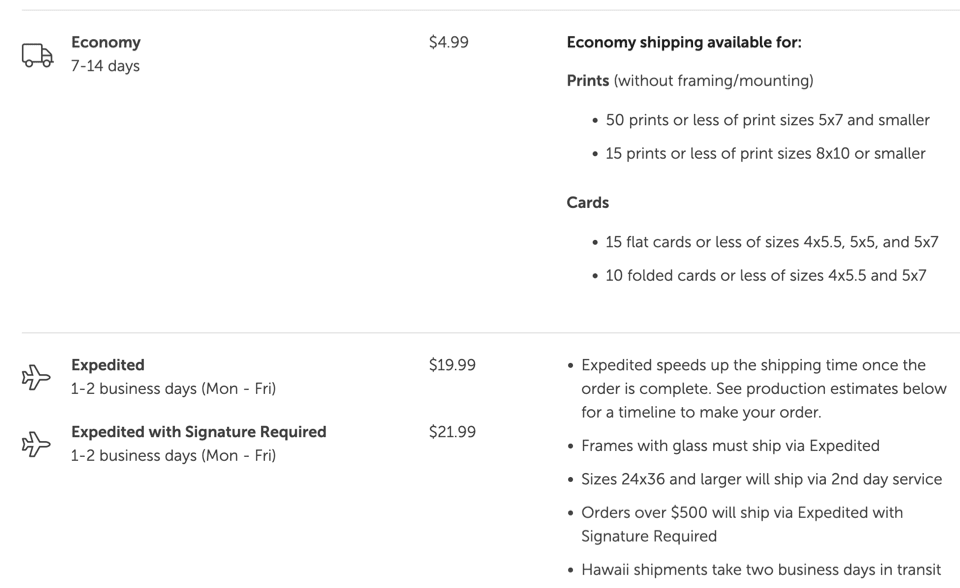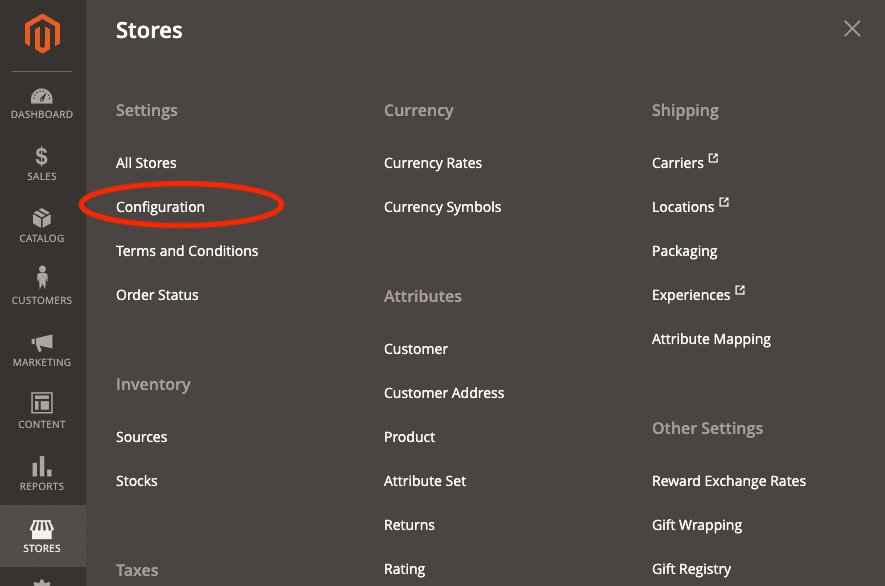Editor’s note: Magento is now Adobe Commerce. To consult with an ecommerce web development expert about maximizing your success on this versatile platform, contact Coalition Technologies.
There are digital goods, physical storefronts, and then ecommerce is something in between. Perhaps the trickiest part of ecommerce to navigate is shipping. Especially in a post-pandemic world with frequent supply chain disruptions, shipping is often a major pain point for businesses. It’s slow, expensive, logistically complicated, and frustratingly out of your control—yet customers seem irate if their package doesn’t arrive within 48 hours.
Choosing the right ecommerce platform can make or break a small business’s shipping strategy. Magento (now Adobe Commerce) is one of the most popular options because of its powerful capabilities and flexible options, but having so many Magento shipping methods can seem a bit overwhelming if you’ve never used the program before. This guide will show you everything you need to start shipping with Magento for a maximum return on your time and investment.
Table of Contents
Why You Can’t Skimp on Shipping
No matter how great your products are, you will lose sales if you can’t offer efficient and cost-effective shipping. Due to the “Amazon effect,” most customers expect a large variety of in-stock products and fast shipping from any ecommerce outlet, whether or not your small business’s warehouses can keep up with the major online retailers. In fact, the average shopping cart abandonment rate is 70 percent, which is often attributed to shipping costs and extra fees. Customers feel unpleasantly surprised—even taken advantage of—to reach the final screen of checkout and see a high shipping fee with 1-2 weeks required for delivery.
It may not seem fair to your ecommerce store, but the reality is that customers have come to expect low-cost or even free shipping, and your business will lose sales if you cannot accommodate those wishes. That’s why so many ecommerce stores utilize shipping integrations with platforms like Magento. The upfront investment can easily pay for itself through customer satisfaction and retention.
What Type of Shipping Options Does Magento Offer?
When it comes to shipping, Magento is quite flexible. This can help you tailor your shipping options to meet the needs of your customers. While the shipping settings will vary based on both the type of shipping you select, you have a few core options to consider.
Free Shipping
This is music to every customer’s ears. A whopping 75% of customers expect no-cost shipping when they make an online purchase. Free shipping might be one of the most popular Magento shipping methods for store owners because of the positive impact on sales. Research shows that free shipping will boost the average order value by 97 percent and reduce the number of customers abandoning their shopping cart by 18 percent.
Magento also allows you to generate free shipping coupon codes, allowing you to selectively offer free shipping as part of a promotion. This gives you the flexibility to offer free shipping only as part of a social media campaign or rewards program, or only in certain seasons—such as when your revenue is higher and you afford to take on more cost.
Because, of course, while shipping is free for the customer, your business absorbs the true cost of shipping and handling. Before selecting this option in Magento, you’ll need to calculate the cost of free shipping and determine if your business can reasonably afford to offer this.
Flat-Rate Shipping
Flat-rate is another popular Magento shipping method because of the simple pricing structure. Customers don’t need to wonder how much shipping will cost if it’s clearly advertised. For example, a pricing table can show the different rates for economy and expedited shipping regardless of order size.

Some ecommerce stores using Magento combine free and flat-rate shipping by offering promotions such as free shipping on orders over $49 or some other amount.
True Cost
While this may be the option most disliked by customers, it’s often the most practical solution for small business owners. Magento shipping allows you to select a carrier, such as DHL, FedEx, UPS, or USPS, and pass on the actual shipping cost to the customer. Rates will be calculated based on the customer’s shipping address.
For international shipments especially, true cost often makes the most sense as it can be difficult to predict how much your business will need to spend to send products overseas.
Keep in mind, your actual shipping costs are likely higher than what the carrier charges after you factor in packaging, duties, taxes, and other fees. Small and new businesses should be in the practice of factoring these other costs into their pricing models and calculating how these costs will change based on business scaling.
How Do I Configure My Shipping Settings to Meet My Needs?
Once you’ve determined the Magento shipping option that makes the most sense for your business, you are ready to configure your store.
Configuring your shipping settings is as simple as using the following navigation: Stores > Configuration > Sales > Shipping Settings.

Before we start, a word to the wise—Magento’s shipping portal times out after 30 minutes of inactivity, so make sure to save your methods and selections before you take a break.
Shipping Origin and Policy
Start by setting your shipping origin and policy parameters. Double check these. In most cases, you’ll want to “use system value” if your business address is already correct. If you ship products from a warehouse at a different location than your main business, make sure to set that address as your shipping origin.
Next, you’re ready to configure your Magento shipping methods. You have options for free shipping, flat-rate, and true cost.
Configuring Free Shipping
Remember, customers love free shipping. A powerful way to implement free shipping in Magento is to integrate it with a minimum order threshold to ensure you aren’t losing money on your shipment.
In the free shipping section, change the “enabled” option to “yes,” and set your minimum order threshold by entering a dollar amount. You have several other options, such as only allowing this in specific countries.
Importantly, make sure to configure the carrier for your free shipping. For example, you may want to only send free packages through UPS Ground and not overnight airmail. You can customize the error message to remind users of the free shipping minimum amount.

Configuring Flat-Rate Shipping
Next, unfold the flat rate section. This is a popular Magento shipping method because it’s so straightforward for customers. Enable “yes,” and fill out the information.
For “type,” choose between “per item” and “per order.” Then enter your flat-rate shipping amount. You also have the option to choose a handling fee, which can either be another fixed charge or a percentage of the customer’s total order.
Consider how you’re advertising your flat-rate shipping. If your marketing materials promise a certain number, such as “$5 per order,” a handling fee may seem like a hidden cost to your customers. On the other hand, if you sell customized or personalized products, handling fees may be the industry standard and will not come as a surprise.
Configuring True Cost Shipping
Here’s where Magento shipping options become more complex. You can establish table rates to charge shipping fees based on a product’s weight. Magento allows you to choose from three “formulas” to make a shipping calculation, considering either the weight, price, or the number of items against the package’s shipping destination. Once again, you have the option to add a handling fee.
You’ll also see a Magento Shipping option beneath “table rates.” This is Magento’s own multi-carrier AI fulfillment option. You must have a Magento account to configure this. Lastly, you set dimensional weight (volume) calculations for each of the listed carriers: UPS, USPS, FedEx, and DHL.
Grow Your Business
It’s a sigh of relief to configure and save your Magento shipping options, but you’ll want to continually monitor your selections throughout the year. As inventories and costs change—or as your business grows—you may want to make adjustments to your shipping methods and rates.
Magento is a powerful and versatile shipping tool. Coalition Technologies is a leader in Magento web design. Whether you need an audit of your current methods or you want to overhaul your entire shipping process, give us a call. We can help your business run efficiently and maximize its revenue, all while creating a superior customer experience.


